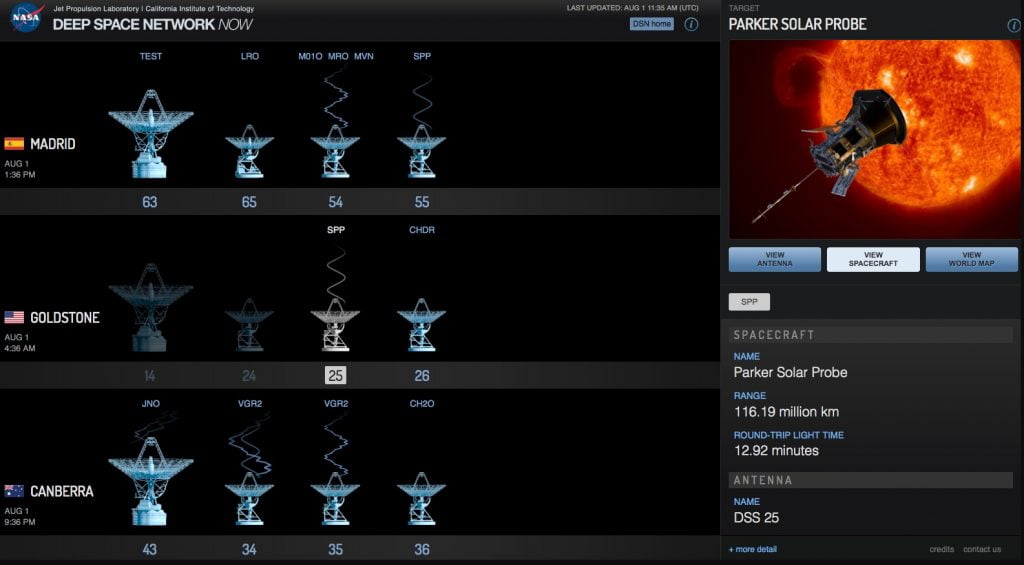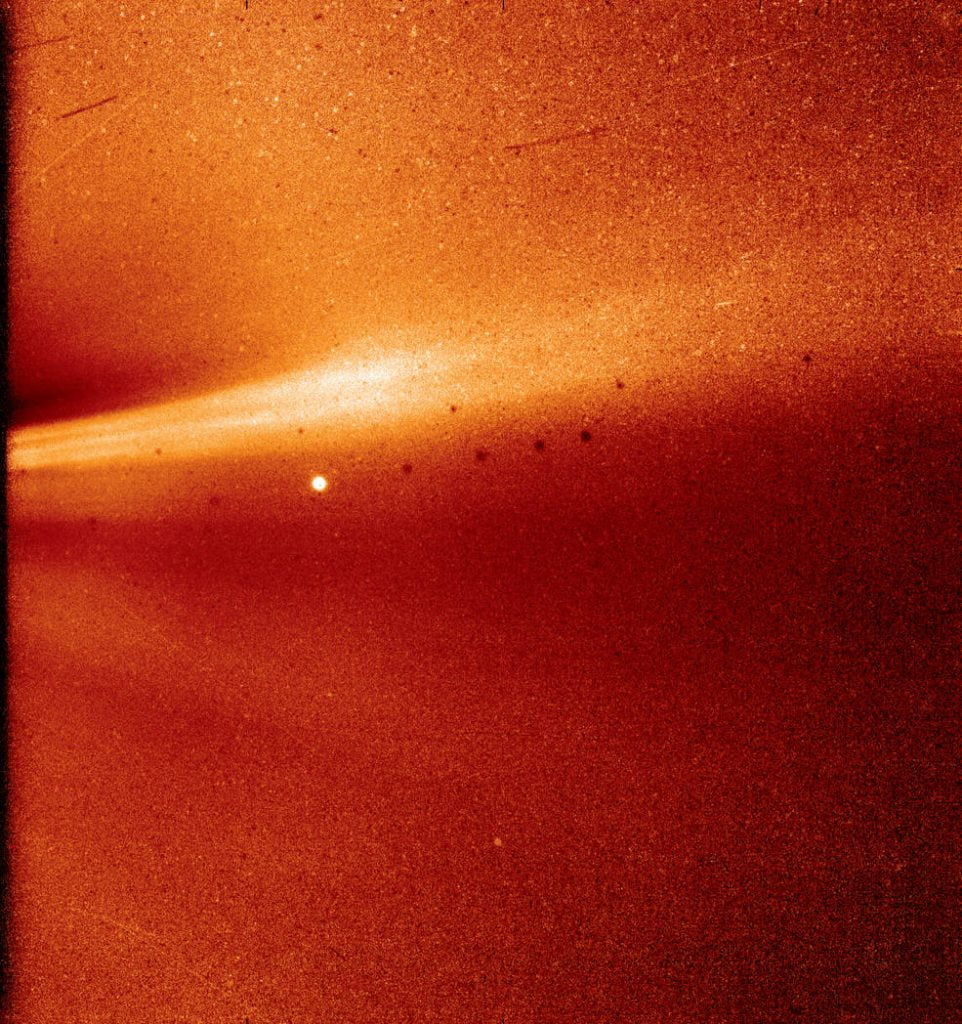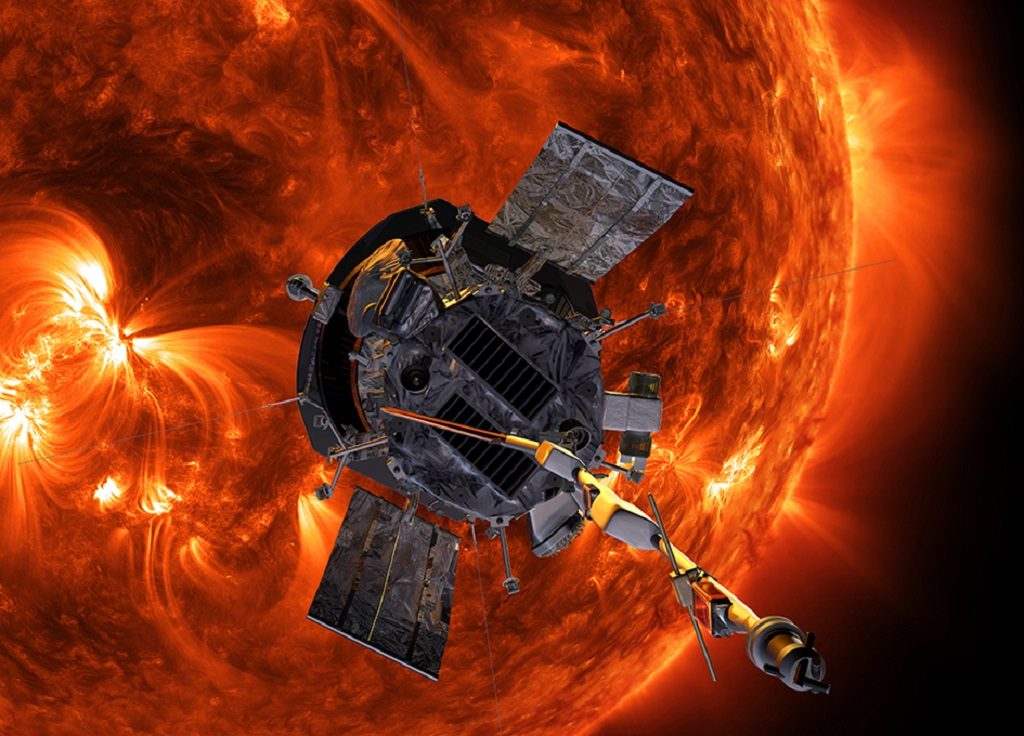It’s been nearly a year since NASA launched the Parker Solar Probe spacecraft on a discovery mission to the sun to better understand the corona – the aura of plasma that surrounds the sun. The mission is part of the ongoing research to protect us from space weather threats and solar wind.
It’s the first time NASA sent a spacecraft into the sun’s atmosphere. And the object is one-of-a-kind, both in its tech and its achievements so far.
The $1.5 billion probe, the fastest possible spacecraft ever and the first human-made object to make it into the sun’s corona, is collecting scientific data via four cutting-edge instrument suites onboard. One of those instruments, the NRL’s Wide-Field Imager for Solar Probe (WISPR), is the only imaging instrument and contains two coronagraph telescopes incorporating active pixel CMOS (complementary metal–oxide–semiconductor) sensors built by Israel’s integrated circuit manufacturer TowerJazz, based in Migdal Ha’emek, in collaboration with SRI International, an independent nonprofit research center.
SEE ALSO: NASA Reveals First-Ever Image From Inside Sun’s Atmosphere Snapped With Israeli Tech
The probe has now completed two flybys of the sun and is approaching its third encounter later this month.
NASA said in an announcement on Thursday that mission scientists at the Johns Hopkins Applied Physics Laboratory (APL) in Laurel, Maryland, were now poring over some 22 GB of data downlinked from the spacecraft, 50 percent more than they had expected to receive by this point. The space administration said the spacecraft’s “excellent performance” and its better-than-expected telecommunications system were key.
An additional 25 GB of science data will be downlinked to Earth by August 15, according to the announcement.

“All of the expected science data collected through the first and second encounters is now on the ground,” said Nickalaus Pinkine, Parker Solar Probe mission operations manager at APL. “As we learned more about operating in this environment and these orbits, the team did a great job of increasing data downloads of the information gathered by the spacecraft’s amazing instruments.”
In December 2018, NASA revealed the first ground-breaking image from inside the sun’s atmosphere after the probe’s first encounter in late October and November, in which it came within 16.9 million miles from the star’s surface.
The rare image came from the spacecraft’s WISPR instrument outfitted with the Israeli-built CMOS sensors which helped capture the first-ever high-resolution image. TowerJazz’s CMOS image sensors and pixel technology are used in photography, industrial, medical, automotive and consumer applications, including high-end camera phones and 3D cameras.
Sign up for our free weekly newsletter
Subscribe
The image shows at least two rays of coronal streamers, structures of solar material within the Sun’s atmosphere, seen over the east limb of the sun The bright object near the center of the image is the planet Mercury, and the dark spots are a result of background correction.
SEE ALSO: Israeli Tech Onboard NASA Solar Probe To Take First-Ever Photos Of The Sun
The first image revealed by NASA from the Parker Solar Probe was of Earth, captured by the WISPR some 27 million miles (43 million km) from our planet in September 2018. The capture came as the spacecraft did a Venus flyby, making a close pass at the planet while performing a gravity assist to draw its orbit closer to the sun.

Mission details
The Parker Solar Probe was launched on August 12, 2018 in a United Launch Alliance Delta IV Heavy rocket from Cape Canaveral, Florida.
It is named for American solar astrophysicist Eugene Newman Parker, 91, who developed the 1958 theory of the continually flowing solar atmosphere, he called the solar wind.
The seven-year mission was launched the help answer three questions, according to Sarah Frazier of NASA’s Goddard Space Flight Center.
“First: How is the sun’s outer atmosphere, the corona, heated to temperatures about 300 times higher than the visible surface below? Second — how is the solar wind accelerated so quickly to the high speeds we observe? And finally, how do some of the sun’s most energetic particles rocket away from the sun at more than half the speed of light?” she wrote before the launch.
The probe is providing scientists “with the measurements essential to understanding solar phenomena that have been puzzling us for decades,” said Nour Raouafi, Parker Solar Probe project scientist at ARL. “To close the link, local sampling of the solar corona and the young solar wind is needed and Parker Solar Probe is doing just that.”
The spacecraft’s third solar encounter will begin on August 27, 2019; its third perihelion, the point of orbit that is closest to the sun, will occur on September 1, just a few days later.
NASA said the data collected during the first two perihelia will be made available to the public later this year.
Viva Sarah Press contributed to this report.
Related posts

Editors’ & Readers’ Choice: 10 Favorite NoCamels Articles

Forward Facing: What Does The Future Hold For Israeli High-Tech?

Impact Innovation: Israeli Startups That Could Shape Our Future




Facebook comments